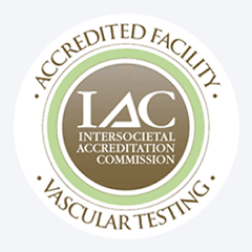As we get older, we often notice visible signs of aging like fine lines and sagging skin. But what we can’t always see is just as important: the health of our vascular system. Aging naturally affects the way our veins and arteries function, increasing the risk of circulation problems, varicose veins, and other venous conditions.
Let’s dive into how your vascular system changes over time, what signs to watch for, and how to take care of your veins at every stage of life.
When Do Varicose Veins Start to Appear?
Many people wonder when they might first notice varicose veins. While genetics, gender, and lifestyle habits all play a role, age is a major factor.
- In your 30s: Early signs of venous insufficiency can begin to appear, particularly if you have a family history of vein issues or spend long periods standing or sitting.
- In your 40s: The prevalence of varicose veins begins to increase during this decade. Hormonal changes, lifestyle factors, and genetics all contribute to the likelihood of developing vein problems.
- Ages 45–65: This is the key age range when varicose veins become most common. By age 50, about 35% of adults show signs of varicose veins, a number that continues to rise with age, , especially for women and those who’ve been pregnant.
Varicose veins occur when the valves inside your veins weaken or fail, allowing blood to pool instead of flowing efficiently back to the heart. This pooling causes veins—especially in the legs—to bulge, twist, or become painful.
Why Veins Become More Visible with Age
You may have noticed more prominent veins in your hands or legs as you’ve aged. This is usually due to:
- Thinning skin: The fatty layer beneath your skin decreases over time, making underlying veins more noticeable.
- Loss of elasticity: As collagen production declines, skin and connective tissue weaken, leading to vein protrusion.
- Weakened vein walls: With age, vein walls and valves can deteriorate, making it harder for blood to return to the heart—especially from the legs.
While visible hand veins are usually harmless, they may signal poor circulation in other parts of the body. If you’re concerned, it’s worth getting a professional evaluation.
Common Age-Related Vascular Symptoms
Heaviness and Fatigue in the Legs
If your legs often feel heavy or tired—especially at the end of the day—it may be more than just aging. These symptoms can be early indicators of chronic venous insufficiency (CVI).
Other related symptoms include:
- Leg cramps, especially at night
- Swelling in the ankles or calves
- Tingling or itching near the veins
- Skin changes or discoloration near the ankles
Left untreated, CVI can lead to more serious complications like varicose veins, venous ulcers, and deep vein thrombosis (DVT).
Bulging Veins in the Forehead or Temple Area
Although less common than leg veins, visible forehead veins can appear more prominently with age. They’re often caused by issues such as thinning skin, loss of elasticity, and increased blood pressures during activity or stress.
In most cases, bulging veins in the face are cosmetic concerns. However, if they appear suddenly or are accompanied by headaches or vision changes, consult a doctor.
Simple Ways to Support Your Vascular Health
Compression Socks: Your Circulatory Support System
Compression socks apply gentle pressure to the legs, helping push blood upward toward the heart. They’re a non-invasive, effective way to improve circulation and prevent swelling after long periods of standing.
Healthy Weight = Healthier Veins
Carrying excess weight increases pressure on your veins, particularly those in the lower body. Even modest weight loss can significantly reduce this strain, improving circulation, blood pressure, and the appearance of varicose veins.

Keep Moving
Staying active helps keep your veins strong and your blood flowing.
Try incorporating:
- Daily walks or light jogging
- Leg exercises to strengthen calf muscles
- Stretch breaks if you sit for long periods
Elevate Your Legs
When possible, elevate your legs above heart level for 15–20 minutes. This can reduce swelling, improve blood return, and alleviate discomfort.
Aging Is Inevitable—But Vein Disease Doesn’t Have to Be
While the risk of vascular issues increases with age, it doesn’t mean you’re destined for discomfort or visible veins. Proactive care can delay or prevent many common vein-related conditions.
At United Vein & Vascular Centers, we offer free vein screenings to help identify problems early—and guide you toward personalized solutions that support healthy circulation at any age.
Frequently Asked Questions
Early signs include leg fatigue, swelling, aching, and visible veins. Over time, you may also experience nighttime leg cramps or skin discoloration near the ankles.
Yes, elevating your legs can help reduce swelling and improve blood flow, offering temporary relief from varicose vein symptoms.
Compression stockings won’t make varicose veins disappear, but they can help manage symptoms by improving circulation and reducing swelling.


